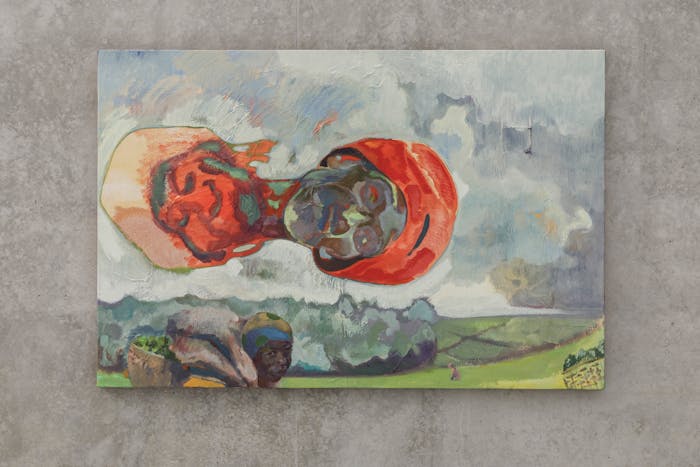In his large-scale paintings depicting dreamlike and mythical scenes, Michael Armitage (1984, Nairobi) weaves together multiple narratives, drawn from historical and current news media, popular culture and his own memories of Kenya, his country of birth. His current show at Kunsthaus Bregenz takes its title from a 2019 work by the artist. In the centre of this image, a figure strides toward the viewer. The facial expression and hunched shoulders — an accusatory stance — convey a certain readiness to fight. Attached to their chest and waist are two canisters of tear gas. Armitage created the painting after seeing a demonstration by Kenya’s largest opposition party in Nairobi in 2017. He has said that he is more interested in the people than their leaders. His predominant concerns are the social and political issues facing our contemporary global society, and he focuses on the universal social problems that many choose to deny. He has a firm belief that art is an agent of social change and, through his captivating figurative style, he compels the viewer to take a closer look at the issues his art addresses. Armitage’s compositions are intensely colourful, vibrant, and moving. Events and imaginings are intertwined into rich narratives. Traditional motifs from European painting enter into his scenes. He paints with oil on lubugo, a traditional bark cloth from Uganda that is beaten over a period of days, creating a natural material that, when stretched taut, has scattered holes and coarse indents. These imperfections then all become part of the artwork.
